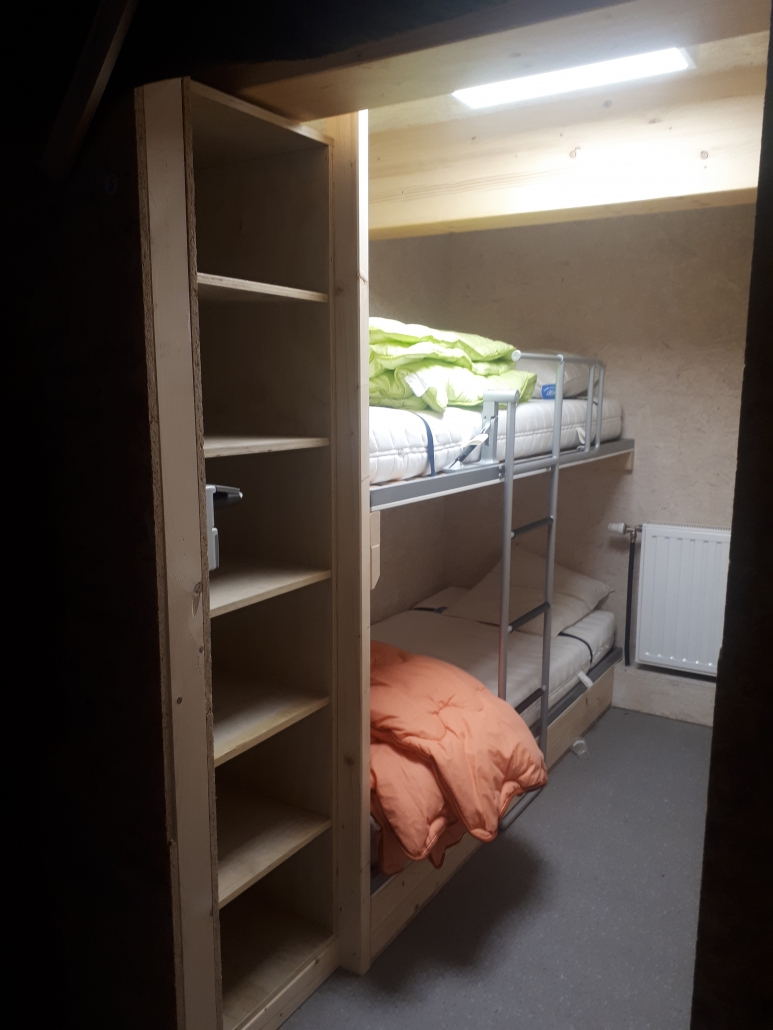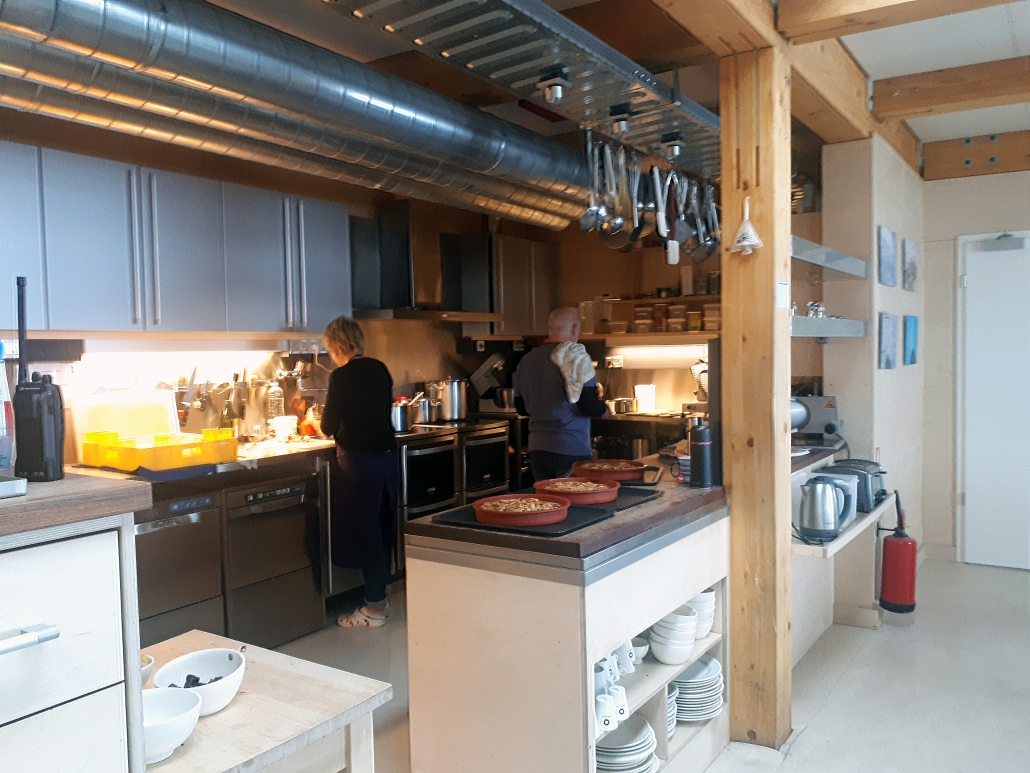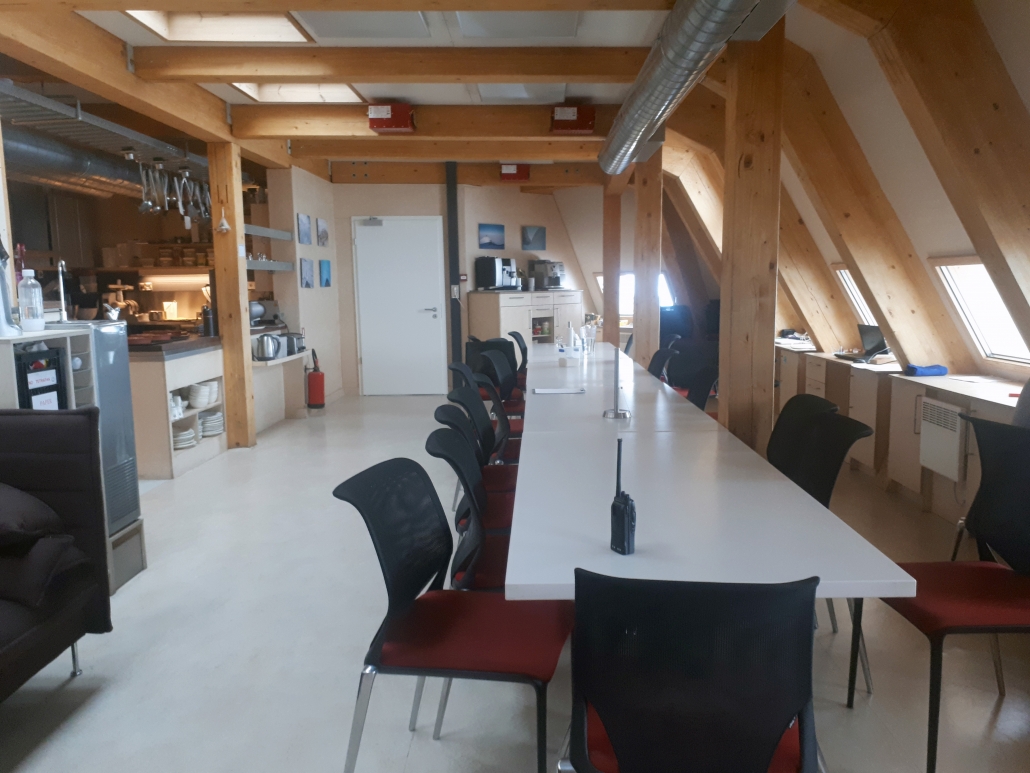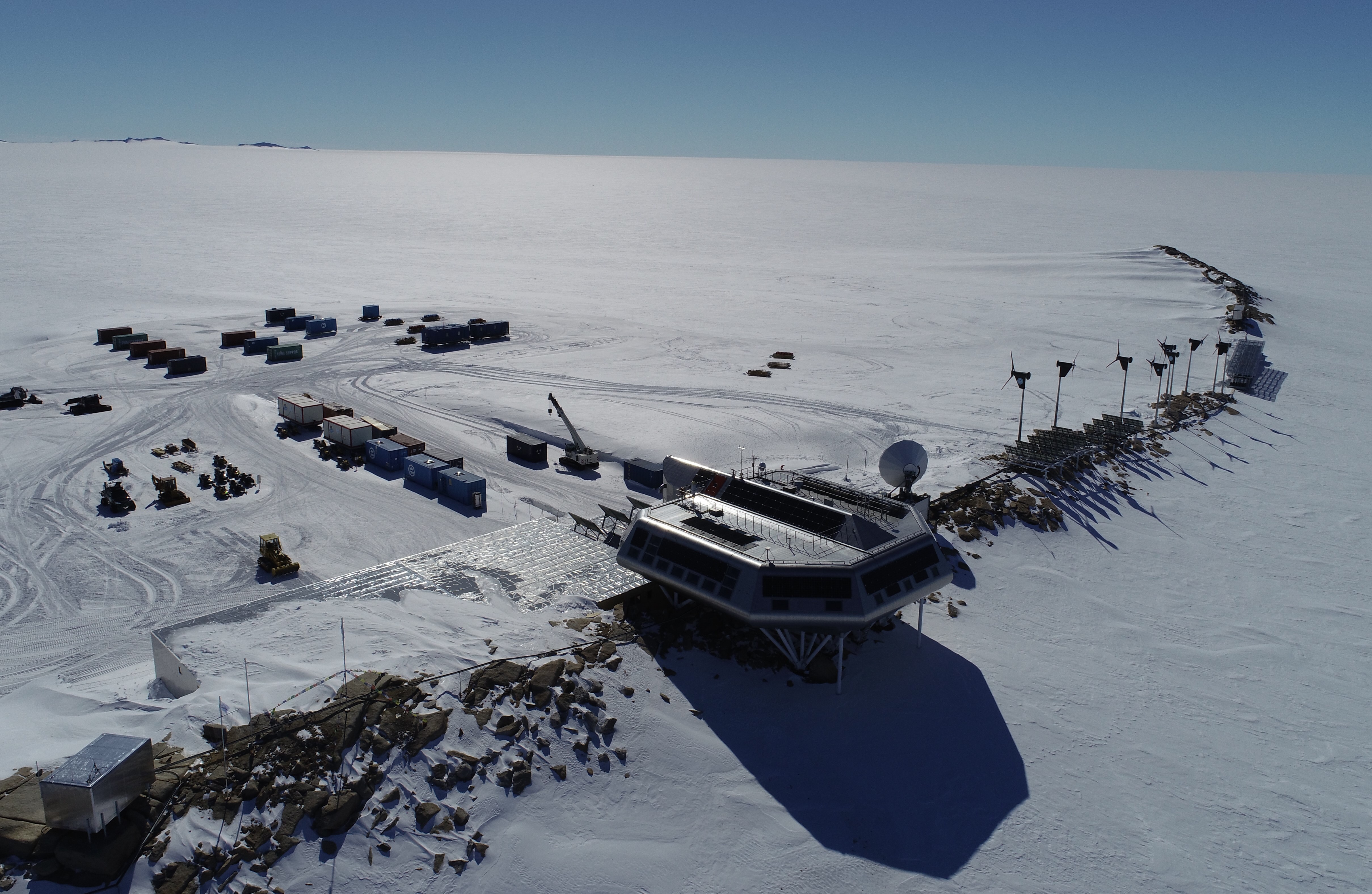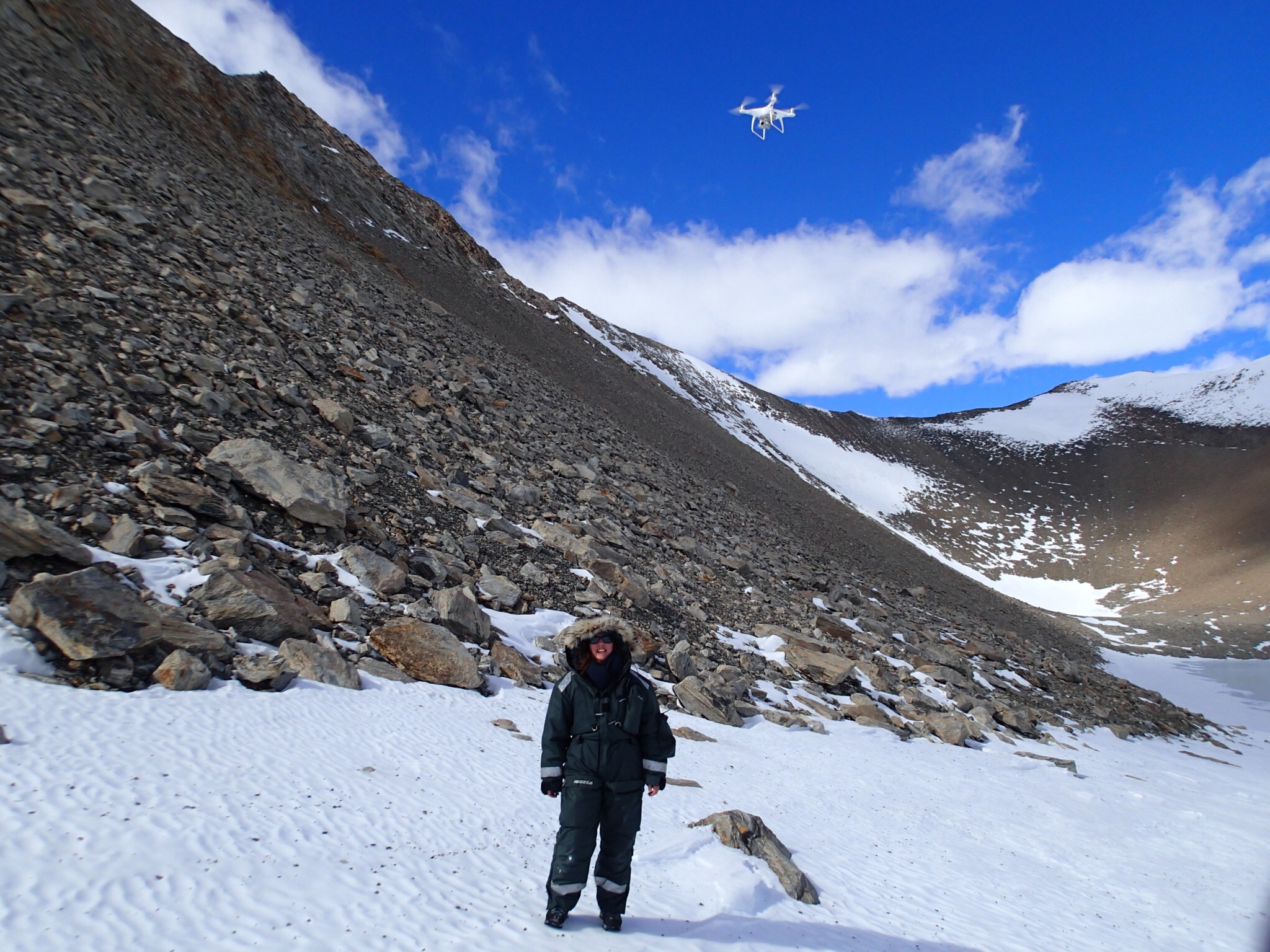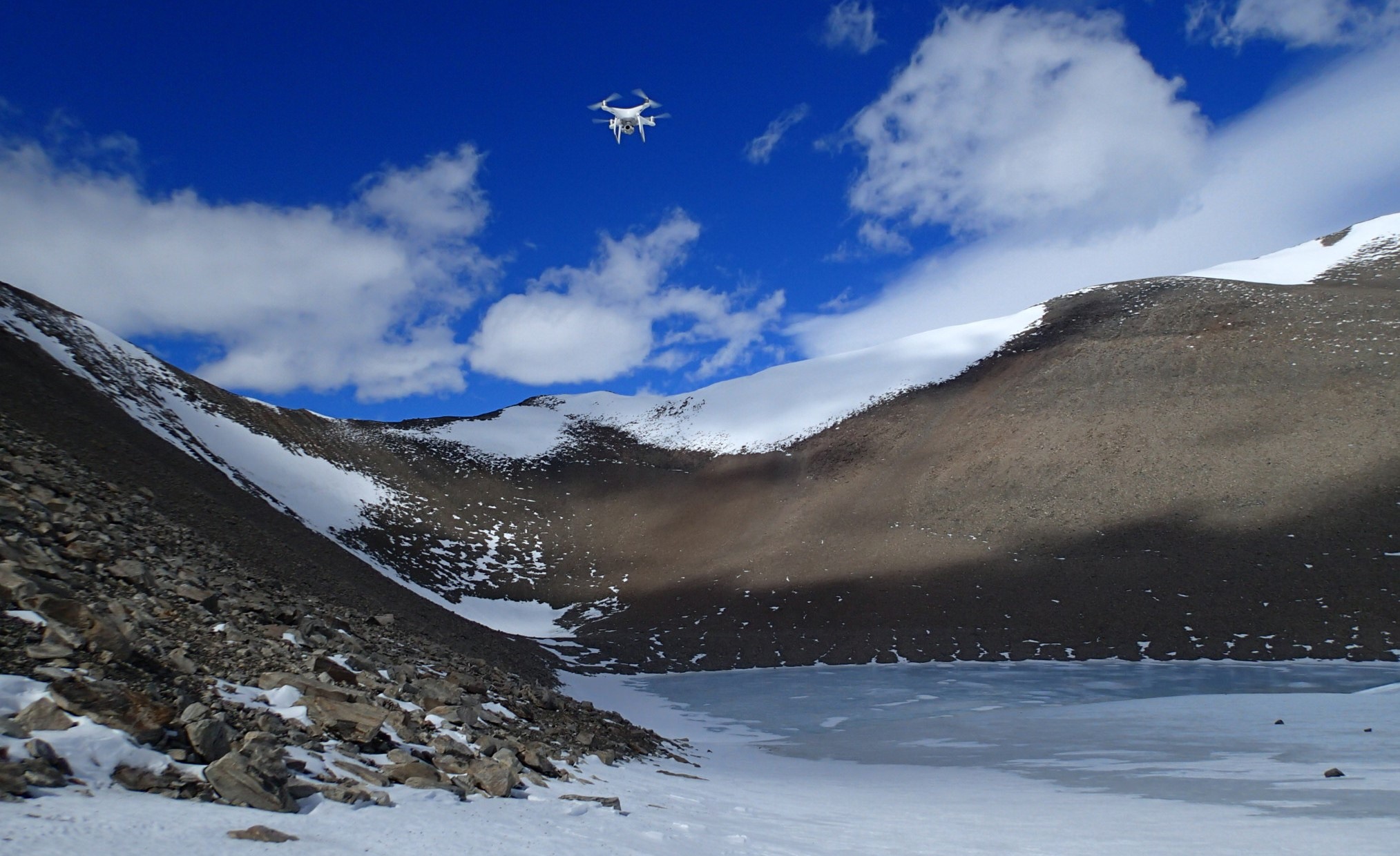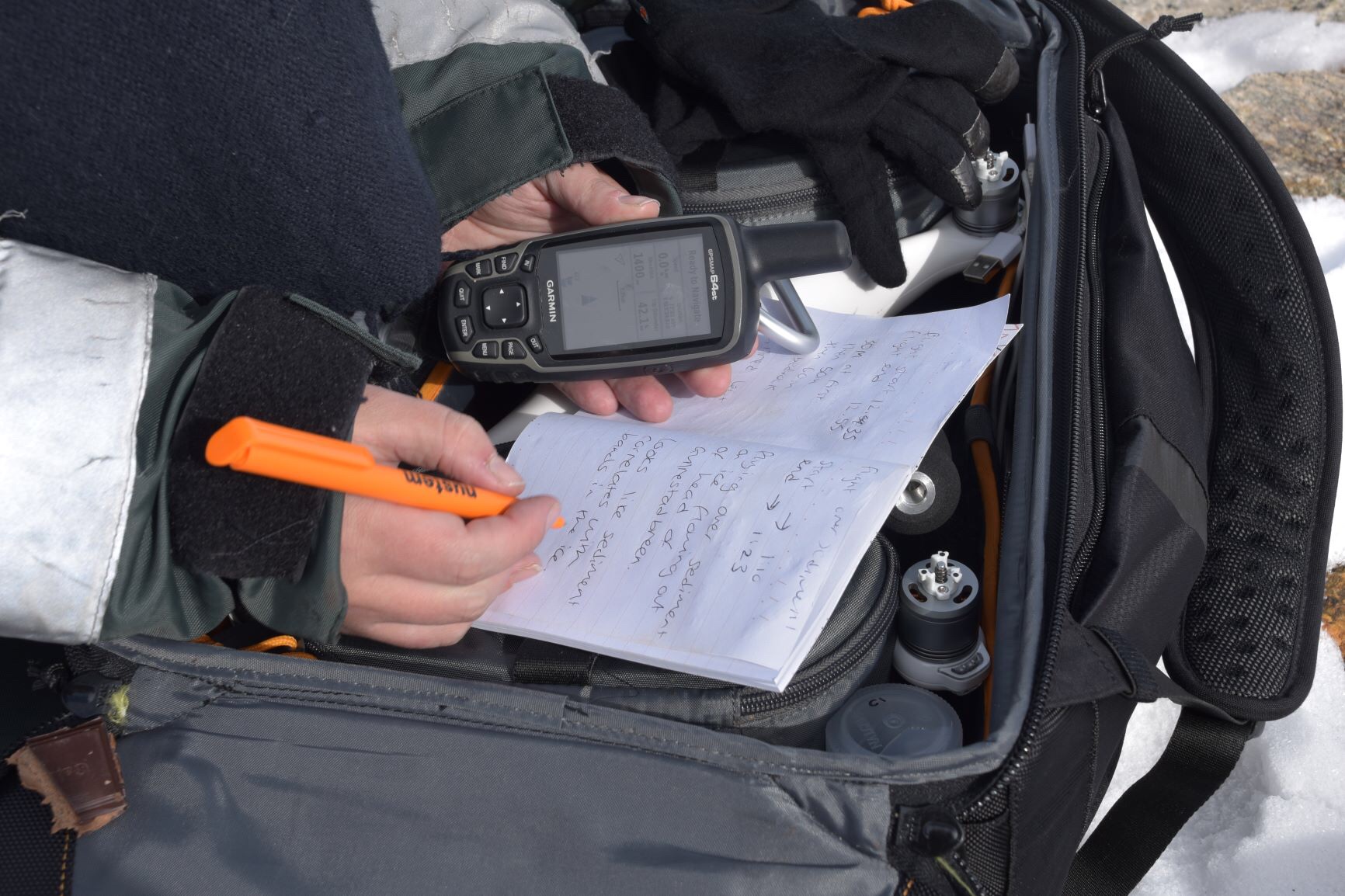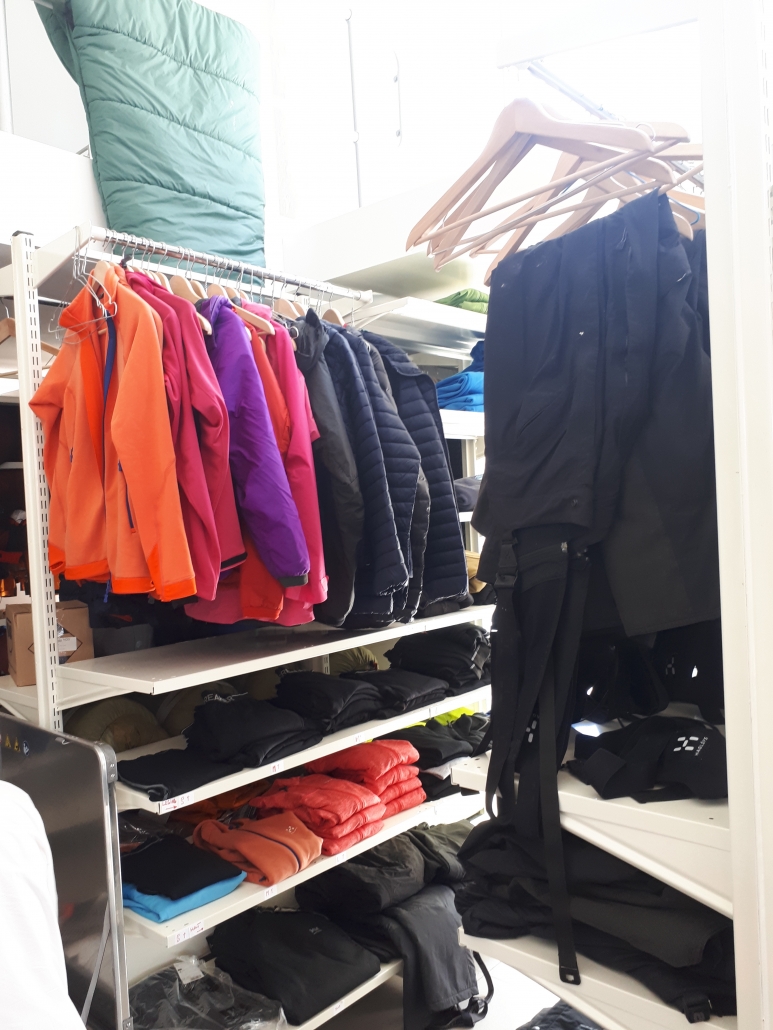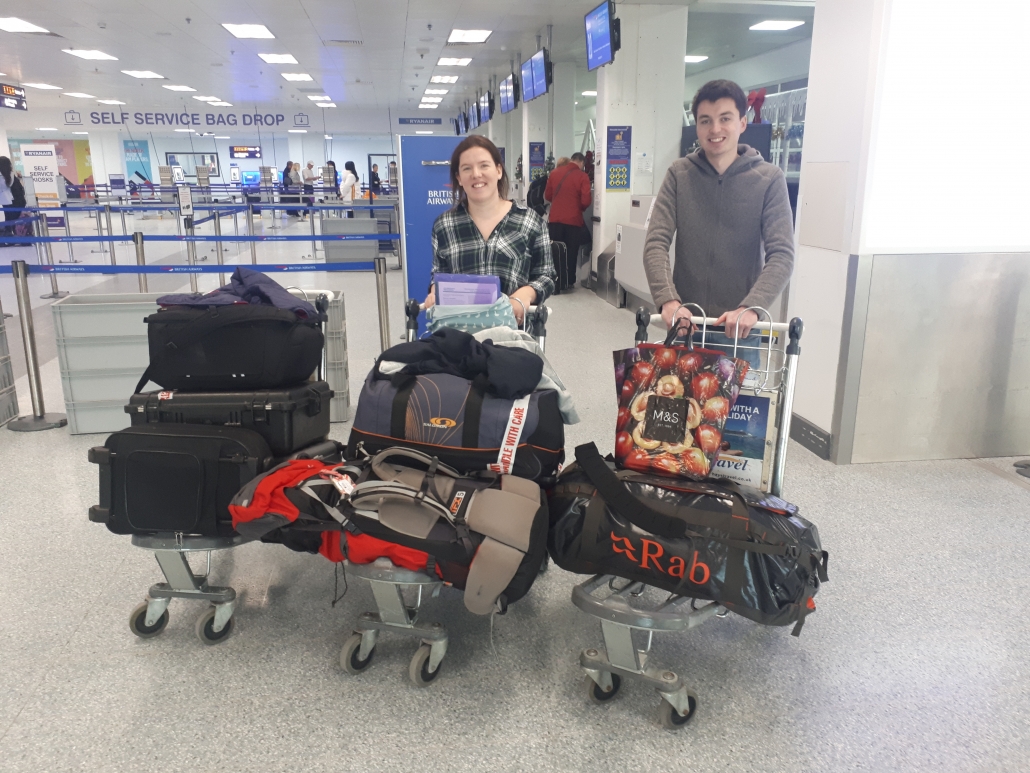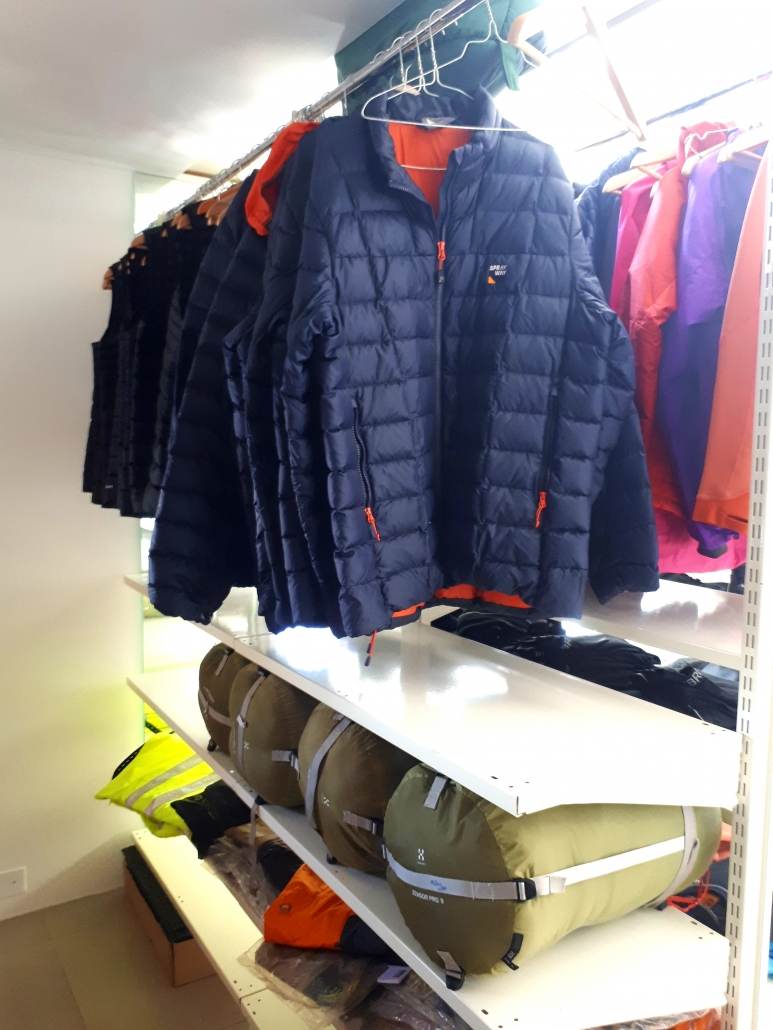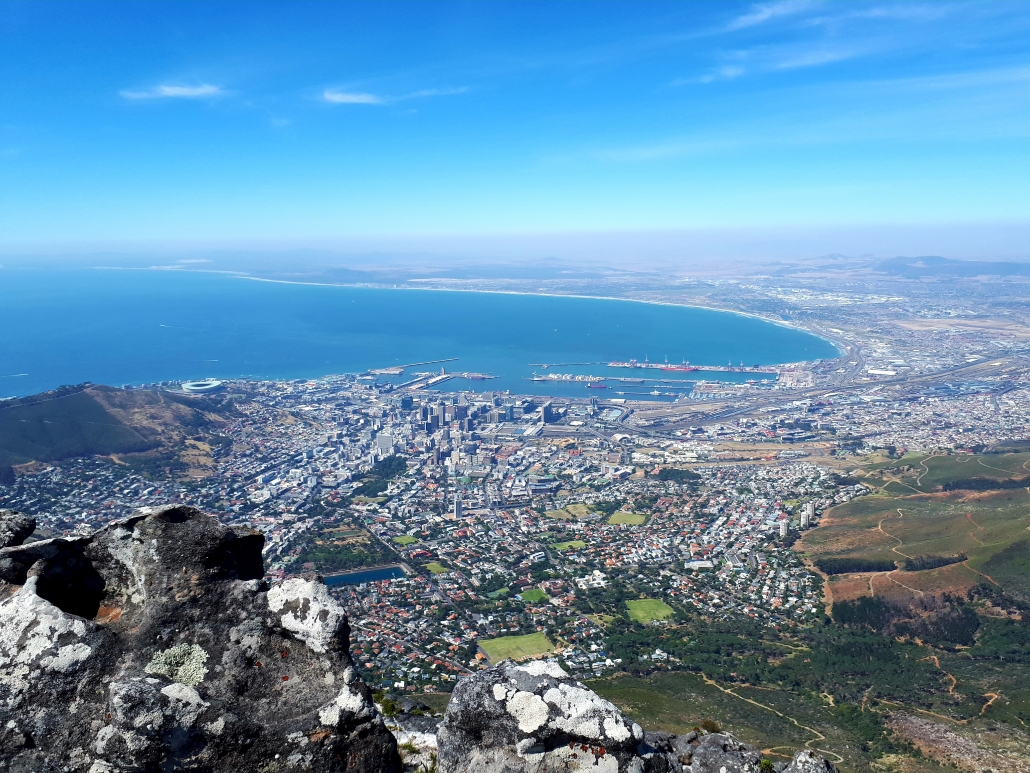Kate in Antarctica: Life on Base
Kate’s been stuck inside with bad weather – windy, with visibility down to less than a metre. Not good for science or filming… but great for writing blog posts! Here’s her latest, and for the full set (and some background) be sure to check out our page all about Kate in Antarctica.
Station life is comfortable and well-structured. Everyone sleeps in bunk beds in containers at the back of the station, or rooms which are tucked away in the main structure of the base. Rooms are wood-lined and warm, with windows for light and electricity to charge cameras and radios. The only noise comes from the wind, and sometimes from the sound it makes whipping through the station’s nine wind turbines. Once you emerge from a peaceful slumber you can shuffle your way to the kitchen in slippers if you have a station room, or don your woolly hat, cosy boots and sunglasses for the short commute. It’s always so bright outside – if you leave your sunglasses off for even a few minutes, your eyes start to hurt.
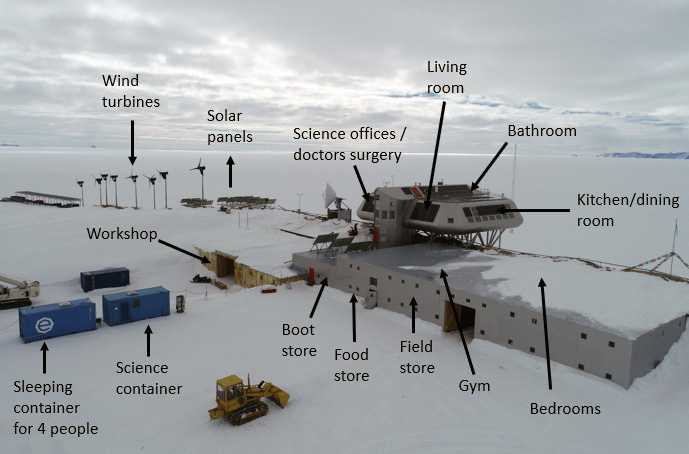
Breakfast is 7-8am Monday-Saturday. After self-serve toast, cereal, yoghurt, coffee and tea, everyone scatters to their place of work: the station office, kitchen, doctor’s surgery, garage, snow-melting room, the science container (where I charge and test all my equipment), the station lab, the airstrip, or the new hanger. Staff and researchers who work outside tend to fill a flask of tea and pop a bar of chocolate in their pocket before they pile on more layers of clothes that will keep them warm until lunchtime. The station is well insulated, maintaining a very comfortable temperature so those working inside tend to be happiest in jeans, a t-shirt and trainers.As James and I travel a little further to our place of work – the mountains – we prepare a packed lunch of soup and a sandwich, with a biscuit or bar of chocolate. We shove this in the top of our metal Zarges kit box (ed — we didn’t know what these were, but they turn out to be really cool metal boxes) which already contains a host of safety and science equipment. Then comes one of me favourite daily tasks: sled organisation and security! Making sure each piece of equipment is in the best place on the sled is like a game of Tetris. Big boxes go first to shelter smaller and more delicate equipment from the snow that’s kicked up by the 30 kph snowmobile. Once everything is in place the rope work can commence. We tie everything down to make sure it doesn’t jump around or fall off the sled on the bumpy journey to the mountains. We travel across wind-blown grooves and ridges in the snow called ’sastrugi’, and the sled must ride up or shovel through peaks and troughs of snow and ice as it’s dragged behind our snowmobiles.
Scott Webster, a field guide at the British Antarctic Survey taught me a few sled-securing techniques when I was researching the Ellsworth mountains in 2014, so I follow his guidance – looping ropes around straps, crossing the rope across the sled from one side to the other and back, before pulling the rope as taut as I can, then tying the whole thing off with a couple of tried and tested knots. The result is a beauty to behold, I assure you!
After a day’s work James and I return from the ‘field’ (geologist always describe their research site as ‘the field’ even if they’re not actually in a field!), usually by about 6pm. Then the sled unroping and unpacking begins! We have to slowly warm up electrical equipment, placing the Zarges boxes in the colder station entrance for an hour before we unpack them and place everything on charge. At this stage we start to back up the day’s data on laptops and hard drives. Whilst the station staff put away their tools, turn off their computers and take off extra layers of clothing, we try to take a quick look at the day’s data before dinner is served at 8pm.
Our chef Christine serves dinner onto plates piled high to feed the hungry workers. By 9pm everyone is full… and tired. We take it in turn to help clean the dishes and the kitchen, with those ‘off duty’ having some time to relax. This tends to involve chatting around the dining table, reading on the sofas, listening to music or replying to an email or two on one of the station’s two internet-connected laptops.
The 10-hour working day is labour-intensive and almost non-stop, so most people fall into bed exhausted between 10 and 11pm.

